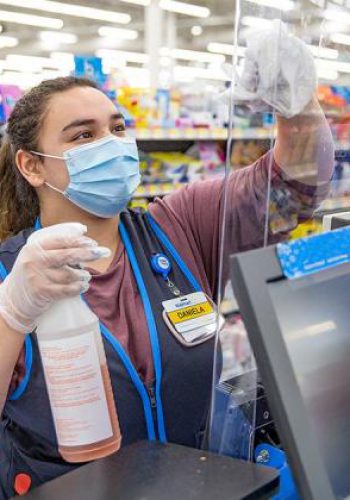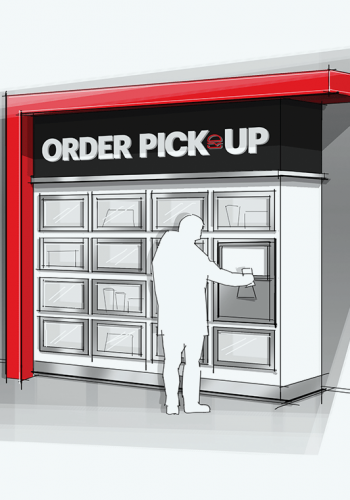ICSC: What will retail’s normal look like after COVID-19?

About 50 percent of the 1,000 U.S. malls anchored by department stores in America are vulnerable to permanent closure by the end of 2021, according to Green Street Advisors. If struggling department store anchors go out of business amid COVID-19, other troubled tenants at those shopping centers likely will activate lease clauses to shutter their stores, as well, the report said.
Barry Sternlicht, chairman and CEO of Starwood Capital Group, disagrees. His company owns about 30 malls, plus neighborhood shopping centers, hotels and other commercial properties. Malls will still be around, he said, but retenanting will be necessary. “It’s going to take a lot of money to replace tenants that don’t make it,” he said, “but one thing the mall has going for it is that everyone knows where it is. You have great infrastructure, access, great signage.”
Renovated stores
“Brick-and-mortar has a chance to capture consumer attention unlike [what] they’ve had in the past 10 years,” said Naveen Jaggi, JLL president of retail advisory services in America. But it’s all about safety for the foreseeable future, he says. “When the consumers get back to the store, it’s up to the retailer to make the experience safe, acceptable and on the journey to being seamless between the car the curb and the store. Brick-and-mortar, online and last mile will give clients the best engagement.” More retailers will have to get into the business of checking temperatures and doing COVID-19 tests to smooth the reopening process, said Sucharita Kodali, Forrester Research vice president and principal analyst.
Commercial property owners are scrambling to figure out how to proceed with few precedents to follow, said Greg MacKinnon, research director for the Pension Real Estate Association. “There’s high demand for deep-cleaning services,” he said of disinfecting efforts as an example, “but they can cost more than rent and will be difficult to keep up in the long term.” Landlords or stores could have people sign waivers before they shop, Sternlicht suggested.
Additionally, stores will need to address traffic patterns, said Emily Albright Miller, vice president of strategy at Big Red Rooster, JLL’s in-house design firm. “One-way traffic patterns will become the norm, where customers must follow a specific, marked path though the store,” she said. Strategies for a touchless shopping experience can range from smartphone and voice-activated technologies to specific doors for entry and exit, she said. She added: “Experience and services will be that much more important. Retailers will partner with artists and other brands to bring exciting experiences to life.”
Omnichannel
Online sales in the U.S. leapt 49 percent from the March 1-to-March 11 period to the period of mass store closures from March 12 to April 11, according to Adobe Analytics. But that phenomenal e-commerce growth is likely to moderate in the post-COVID-19 environment, Kodali said. “It won’t be all e-commerce all the time,” she said, pointing out that shoppers prefer to shop both online and in store if they can. “There’s no such thing as a single-channel shopper; 95 percent switch channels.”
During the pandemic, retailers haven’t created compelling digital experiences, and that leaves room for brick-and-mortar to regain relevance once stores reopen en masse. “The digital experience has been bad, even with groceries,” Kodali said, noting that items often are out of stock or unavailable for delivery.
Unemployment benefits in the Coronavirus Aid, Relief, and Economic Security Act reduce the incentive for store employees to get jobs at online fulfillment centers in the short term. That leaves retailers with a shallow pool from which to hire if they want to expand their online sales, said Andra Ghent, associate professor of finance at Leonard W. Wood Center for Real Estate Studies at the University of North Carolina Kenan-Flagler Business School.
Curbside pickup and home delivery may have helped supermarkets thrive during the pandemic — orders placed online and picked up at U.S. stores surged 208 percent year over year between April 1 and April 20, according to Adobe Analytics — but retailers might not maintain such robust service after the pandemic, Kodali added. “It’s expensive. It costs a grocer $7 for a click-and-collect, $20 to deliver. That’s not enough margin. They won’t lean into this. Retailers don’t have a choice now; they will in another year.”
Where will retailers invest their precious funds in the post-COVID-19 market? They will cut out pie-in-the-sky innovations, new concepts and new products, Kodali said. “Everything about driving e-commerce will get invested in more,” she said. Look for chains to enhance existing curbside delivery and loyalty programs, as well as new businesses like content creation, she added. Government relations also likely will become a key expense as retailers seek recovery aid.
Article originally published by ICSC.


